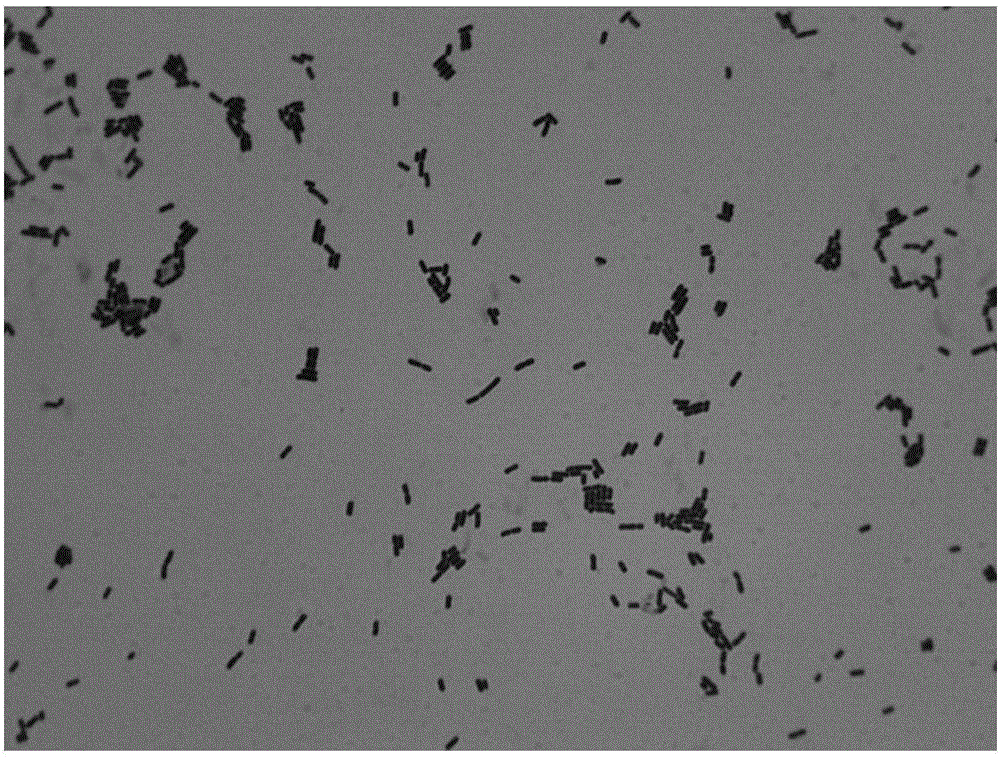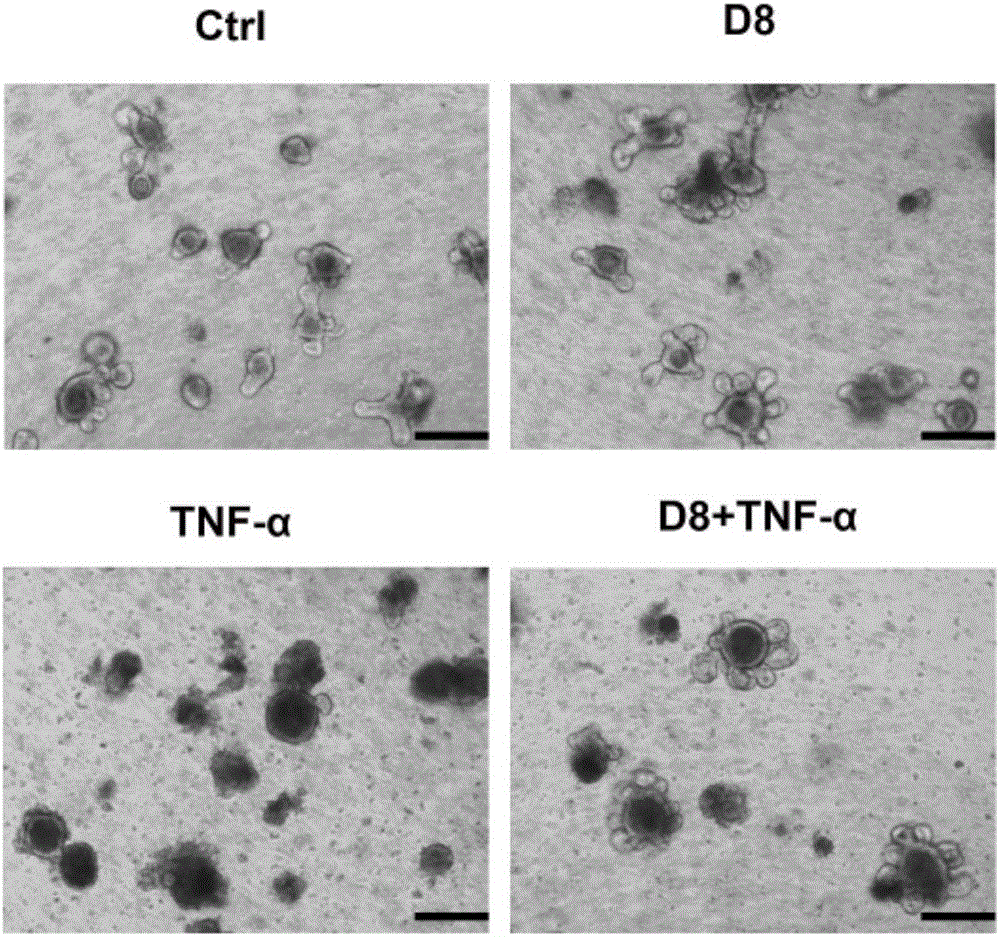Lactobacillus D8 and application thereof
A technology of Lactobacillus and intestinal tract, applied in Lactobacillus D8 and its application field, can solve the problems of no Lactobacillus-intestinal organoid-lamina propria lymphocyte co-culture model, no separation, no immunological effect of Lactobacillus, etc. , to achieve the effect of maintaining intestinal health, improving depth and improving immune level
- Summary
- Abstract
- Description
- Claims
- Application Information
AI Technical Summary
Problems solved by technology
Method used
Image
Examples
Embodiment 1
[0044] Example 1 Isolation and Identification of Lactobacillus D8
[0045] 1.1 Source of samples and preliminary screening of strains
[0046] The sample came from a 30-day-old Duroc piglet, which was purchased from Jiangsu Academy of Agricultural Sciences. After the piglet was slaughtered, the abdominal cavity was opened, and the two ends of the duodenum were tied with sterilized cotton rope. Send it to the laboratory within 30 minutes for strain separation. The separation operation is carried out in an ultra-clean workbench. Cut the intestinal segment longitudinally with sterile scissors, then rinse the contents of the intestinal surface with sterile PBS buffer, and then use a razor blade Gently scrape about 0.5 g of the intestinal wall mucosa, place it in a conical flask filled with glass beads and oscillate fully, let it stand at room temperature for 2-3 minutes, take 100 μl of the suspension and coat the surface of MRS agar medium (pH 5.8), 37 Cultivate in a candle jar f...
Embodiment 2
[0052] Example 2 Establishment of a co-culture model of Lactobacillus-intestinal organoid-lamina propria lymphocytes in vitro
[0053] 2.1 Isolation and culture of intestinal organoids
[0054] 2.1.1 Mice were purchased from the Experimental Animal Center of Yangzhou University. Four-week-old C57 mice were taken. The small intestine was about 15 cm long. Wash several times with sterile PBS buffer solution;
[0055] 2.1.2 Cut the washed small intestine into 3-5mm fragments, transfer it to a 50ml sterile centrifuge tube, add 10mL of 20mM pre-cooled EDTA, digest on ice for 20min, suck up the liquid with a pipette gun and discard it, and keep the small intestine tissue ;
[0056] 2.1.3 Add pre-cooled PBS to the small intestine tissue, pipette gently and continuously with a pipette gun, and pass through an optical microscope in time to discard the supernatant containing a large number of villi until a large number of small intestinal crypts appear in the field of vision, and begi...
Embodiment 3
[0068] Example 3 Establishment of a co-culture model of Lactobacillus-intestinal organoid-lamina propria lymphocytes in vitro
[0069] Basically consistent with Example 2, the difference is that the lamina proprialymphocytes (lamina proprialymphocytes) and intestinal organoids (intestinal organoids) are mixed according to the volume ratio of 3:1 (the specific amount is 3 μl lamina proprialymphocytes and 1 μl intestinal organoid), add (50 μl per well) Matrigel resuspended, spread in 24-well plate, add 50 μl Matrigel to each well, add 500 μl DMEM / F-12 medium (Gibco, USA) (containing 25ng of recombinant mouse EGF, 50ng of recombinant mouse Noggin and 125ng of recombinant human R-spondin), placed in a cell incubator for cultivation. Lactobacillus treatment group needs to add 1×10 per well 3 CFU of Lactobacillus D8, an in vitro Lactobacillus-intestinal organoid-lamina propria lymphocyte co-culture model was constructed.
PUM
 Login to View More
Login to View More Abstract
Description
Claims
Application Information
 Login to View More
Login to View More - R&D
- Intellectual Property
- Life Sciences
- Materials
- Tech Scout
- Unparalleled Data Quality
- Higher Quality Content
- 60% Fewer Hallucinations
Browse by: Latest US Patents, China's latest patents, Technical Efficacy Thesaurus, Application Domain, Technology Topic, Popular Technical Reports.
© 2025 PatSnap. All rights reserved.Legal|Privacy policy|Modern Slavery Act Transparency Statement|Sitemap|About US| Contact US: help@patsnap.com



